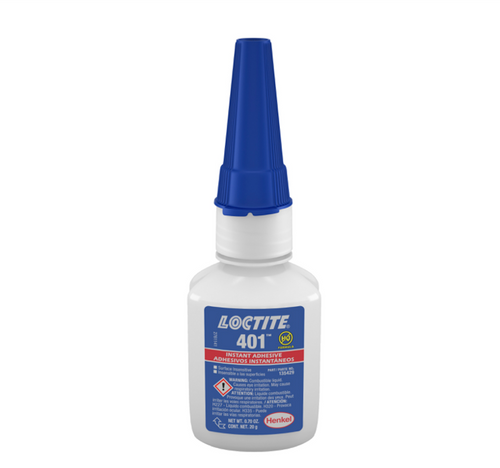Norland Optical Adhesive, 86H
-
Norland Optical Adhesive 86H is an adhesive that will cure optically clear when exposed to long wavelength ultraviolet or visible light (blue-violet) or heat. The adhesive has low viscosity and meets the Bellcore specifications of 85C/85RH for 2000 hours as well as being USP Class VI biocompatible NOA 86H is recommended for bonding glass or plastic. NOA 86H is cured by ultraviolet light between 315 to 400 nanometers and visible light between 400 to 420 nanometers. The peak absorption wavelengths are 325, 365 and 400 nanometers. Minor absorption wavelengths are 410 and 420 nm. Full cure requires 2.5 Joules/cm 2 .
In addition to the UV cure, NOA 86H contains a latent heat catalyst that can quickly cure areas that do not see the ultraviolet light. The catalyst allows the adhesive to cure in 10 minutes at 125°C in a convection oven, or 3 hours at 80° C. Faster cure times are possible with infrared ovens. Areas in contact with air will cure tacky unless exposed to UV light or given the 125° C cure. Temperatures less than 80°C will not activate the adhesive. The advantage of the heat cure is to bring partially cured adhesive to full cure to get the maximum physical properties of the adhesive. The heat cure is not required if all the adhesive receives proper exposure to UV or visible light
When fully cured, NOA 86H has very good adhesion and solvent resistance, but it has not reached its optimum adhesion to glass. This will come with aging over a period of about 1 week in which a chemical bond will form between the glass and adhesive. This optimum adhesion can also be obtained by aging at 50C for 12 hours.
NOA 86H can withstand temperatures before aging from -15C to 90C when used for glass bonding. After aging, it will withstand temperatures from -125C to 125C.
Product Description
Norland Optical Adhesive, 86H
-
Norland Optical Adhesive 86H is an adhesive that will cure optically clear when exposed to long wavelength ultraviolet or visible light (blue-violet) or heat. The adhesive has low viscosity and meets the Bellcore specifications of 85C/85RH for 2000 hours as well as being USP Class VI biocompatible NOA 86H is recommended for bonding glass or plastic. NOA 86H is cured by ultraviolet light between 315 to 400 nanometers and visible light between 400 to 420 nanometers. The peak absorption wavelengths are 325, 365 and 400 nanometers. Minor absorption wavelengths are 410 and 420 nm. Full cure requires 2.5 Joules/cm 2 .
In addition to the UV cure, NOA 86H contains a latent heat catalyst that can quickly cure areas that do not see the ultraviolet light. The catalyst allows the adhesive to cure in 10 minutes at 125°C in a convection oven, or 3 hours at 80° C. Faster cure times are possible with infrared ovens. Areas in contact with air will cure tacky unless exposed to UV light or given the 125° C cure. Temperatures less than 80°C will not activate the adhesive. The advantage of the heat cure is to bring partially cured adhesive to full cure to get the maximum physical properties of the adhesive. The heat cure is not required if all the adhesive receives proper exposure to UV or visible light
When fully cured, NOA 86H has very good adhesion and solvent resistance, but it has not reached its optimum adhesion to glass. This will come with aging over a period of about 1 week in which a chemical bond will form between the glass and adhesive. This optimum adhesion can also be obtained by aging at 50C for 12 hours.
NOA 86H can withstand temperatures before aging from -15C to 90C when used for glass bonding. After aging, it will withstand temperatures from -125C to 125C.
Product Videos
Custom Field
-
Norland Optical Adhesive 86H is an adhesive that will cure optically clear when exposed to long wavelength ultraviolet or visible light (blue-violet) or heat. The adhesive has low viscosity and meets the Bellcore specifications of 85C/85RH for 2000 hours as well as being USP Class VI biocompatible NOA 86H is recommended for bonding glass or plastic. NOA 86H is cured by ultraviolet light between 315 to 400 nanometers and visible light between 400 to 420 nanometers. The peak absorption wavelengths are 325, 365 and 400 nanometers. Minor absorption wavelengths are 410 and 420 nm. Full cure requires 2.5 Joules/cm 2 .
In addition to the UV cure, NOA 86H contains a latent heat catalyst that can quickly cure areas that do not see the ultraviolet light. The catalyst allows the adhesive to cure in 10 minutes at 125°C in a convection oven, or 3 hours at 80° C. Faster cure times are possible with infrared ovens. Areas in contact with air will cure tacky unless exposed to UV light or given the 125° C cure. Temperatures less than 80°C will not activate the adhesive. The advantage of the heat cure is to bring partially cured adhesive to full cure to get the maximum physical properties of the adhesive. The heat cure is not required if all the adhesive receives proper exposure to UV or visible light
When fully cured, NOA 86H has very good adhesion and solvent resistance, but it has not reached its optimum adhesion to glass. This will come with aging over a period of about 1 week in which a chemical bond will form between the glass and adhesive. This optimum adhesion can also be obtained by aging at 50C for 12 hours.
NOA 86H can withstand temperatures before aging from -15C to 90C when used for glass bonding. After aging, it will withstand temperatures from -125C to 125C.







